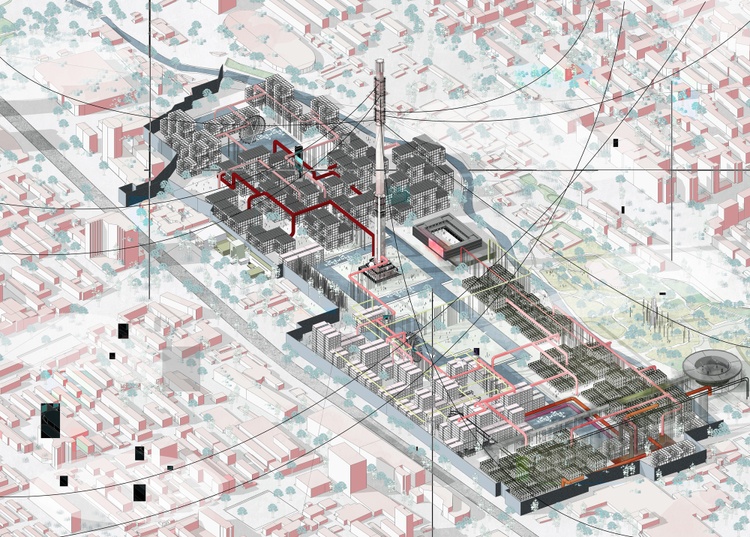Exactly How CDA Architects Provide Cutting-Edge Solutions for Sustainable Architecture
Exactly How CDA Architects Provide Cutting-Edge Solutions for Sustainable Architecture
Blog Article
Understanding the Collaborative Refine In Between Designers and Engineers in Modern Building Projects
The collective process between architects and engineers is crucial in modern building tasks, as it balances design intent with design expediency. Checking out these dynamics reveals insights that might significantly impact job end results and general industry requirements.
The Value of Collaboration
The collaborative harmony between engineers and engineers is vital for the successful awareness of any type of building task. This partnership combines distinct expertise and viewpoints, allowing the combination of ingenious layout with useful design remedies. By interacting, engineers and engineers can guarantee that a task not just fulfills aesthetic and practical requirements but likewise follows safety and security, sustainability, and monetary restrictions.
Collaboration fosters a common vision, promoting the placement of goals and assumptions from the beginning. This positioning is vital in dealing with potential difficulties and mitigating threats that might develop during the project lifecycle. Furthermore, a collaborative method enables the reliable appropriation of sources, maximizing both time and expense.
The importance of cooperation reaches the iterative process of layout and building and construction, where responses from designers can inform building decisions, leading to even more viable and lasting styles. On the other hand, architects can influence engineers to assume creatively regarding exactly how to accomplish architectural stability without jeopardizing imaginative intent. Inevitably, the collective relationship between engineers and engineers is not simply helpful; it is essential to the production of premium, useful, and innovative constructed environments that satisfy the demands of society.
Communication Methods and Devices
Effective communication methods and devices are vital for promoting cooperation in between architects and engineers throughout the job lifecycle. Developing clear networks of interaction is vital to make sure that all employee are lined up with task purposes, timelines, and responsibilities. Regular meetings, both in-person and virtual, offer chances for stakeholders to go over progression, address problems, and make informed decisions.

Additionally, embracing collaborative communication devices, such as Slack or Microsoft Teams, permits instantaneous messaging, file sharing, and recurring conversations, advertising a much more dexterous reaction to arising issues. Paper monitoring systems also play a crucial function in arranging project documents, guaranteeing that all staff member have access to the current details.
Shared Goals and Job Vision
A linked task vision serves as the foundation for successful cooperation between designers and engineers (cda architects). This common vision not just straightens the initiatives of both parties but likewise develops a typical structure for decision-making throughout the project's lifecycle. By verbalizing clear goals, stakeholders can successfully browse the intricacies of modern-day construction projects, guaranteeing that both aesthetic and practical demands are satisfied
Developing common goals includes open dialogue and an extensive understanding of each discipline's payments. Engineers normally concentrate on layout intent, spatial relationships, and individual experience, while designers stress architectural integrity, systems capability, and conformity with guidelines. When these point of views are lined up, the outcome is a cohesive task that follows both imaginative ambitions and technical expediency.
Moreover, a well-defined job vision fosters liability among team participants, encouraging each participant to take possession of their role in accomplishing the wanted outcome. Regular check-ins and joint workshops pop over to this web-site can even more strengthen this dedication, enabling for modifications to be made as the job progresses. Inevitably, a common vision not just enhances teamwork but also raises the quality of the final deliverable, resulting in successful project conclusion.
The Role of Innovation
Leveraging technology has actually become essential in enhancing collaboration in between architects and engineers. The integration of sophisticated software program tools helps with real-time communication and information sharing, making it possible for teams to function more effectively and properly. Building Info Modeling (BIM) stands apart as a crucial innovation, enabling both engineers and engineers to produce thorough 3D models that encapsulate layout intent and architectural integrity. This shared visual depiction reduces misconceptions and improves the decision-making process.
Furthermore, cloud-based systems make it possible for smooth partnership, allowing task stakeholders to accessibility and update job information from anywhere. This promotes a culture of transparency and liability, as modifications can be tracked and reviewed in real-time. In addition, mobile applications additional enhance interaction, offering on-site groups with instant accessibility to project requirements and updates.
Emerging technologies such as fabricated intelligence and maker knowing are additionally beginning to play a role in predictive evaluation, assisting groups identify potential concerns prior to they arise. Inevitably, the function of innovation in architecture-engineering partnership not only enhances workflow effectiveness however additionally boosts development, bring about more effective task outcomes. By accepting these technical developments, architects and designers can make certain a more cohesive and effective collaborative process throughout the building and construction lifecycle.
Case Research Studies in Effective Collaborations
Numerous situation research studies illustrate the profound effect of efficient collaborations in between engineers and engineers on project results. One significant instance is the cooperation on the High Line in New York City, where landscape architects, designers, and urban coordinators collaborated to transform a deserted rail line right into a vivid public park. This multidisciplinary approach not only enhanced the aesthetic quality yet additionally ensured structural safety and environmental sustainability.

The Burj Khalifa in Dubai further shows the significance of collective initiatives - cda architects. The integration of design and design competence enabled the job group to achieve Full Article extraordinary heights while adhering to security regulations and aesthetic vision
These examples emphasize the importance of communication, depend on, and shared purposes. In today's intricate construction atmosphere, such collaborations are important to navigating difficulties and providing tasks that fulfill both functional and visionary goals.
Conclusion
In conclusion, the collaboration between engineers and designers is necessary for the success of contemporary construction tasks. Reliable communication techniques, a common job vision, and the integration of innovative modern technologies are important elements that facilitate this collaboration.
Report this page